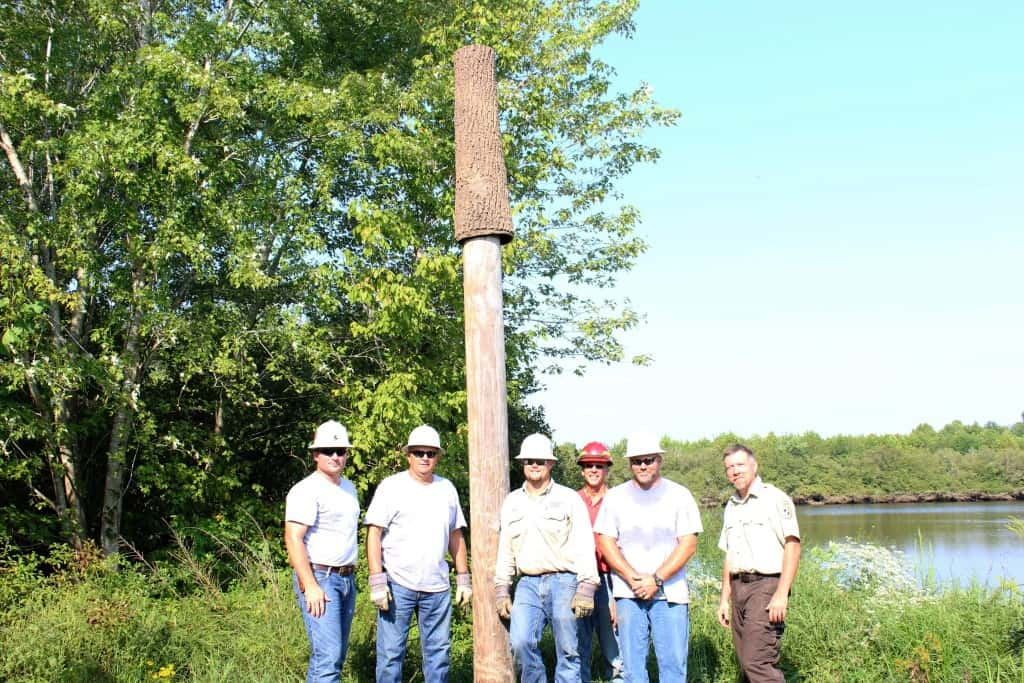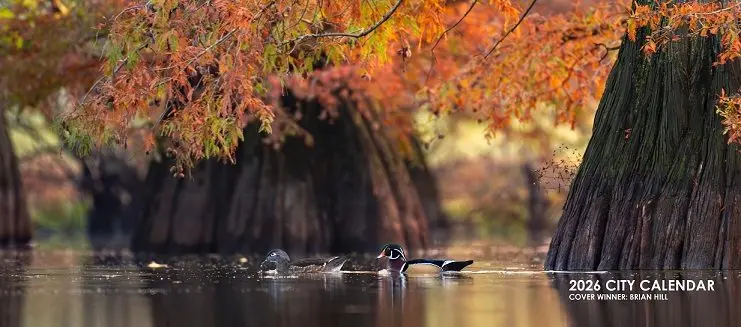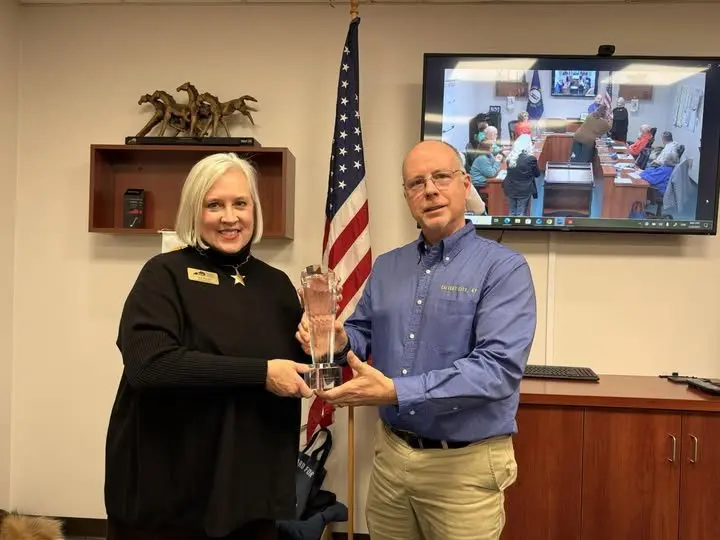
Bats in western Kentucky have a very important job when it comes to production of food and human health– they eat insects that can cause crop damage or transmit diseases. Bats can eat up to half their body weight in just one night. Put another way, a summer colony of 100 bats feeding for approximately 200 days will consume roughly 2,200 pounds of insects or approximately 600,000,000 bugs! It has been estimated that bats provide between $3.7 and $22.9 billion each year in pest control services in North America. Unfortunately, in the past decade several of our bat species populations’ have declined more than 90%. This dramatic decline is primarily a result of habitat loss, and white-nose syndrome.
Since its discovery in New York State in the winter of 2006-2007, white-nose syndrome or the causative fungus (Pseudogymnoascus destructans). The disease strikes bats during hibernation, when their immune systems are shut down, and they must survive on limited fat reserves for several months. The condition is named for a distinctive white fungal growth around the muzzles and on the wings of bats. In the past 10 years, it has spread to 32 states and five Canadian provinces, killing more than 5.7 million cave- or mine-hibernating bats. Currently, no treatment or means of preventing transmission of this fungus is known. However, there are no known threats to humans from this fungus.
One of the other major causes for population decline in bats is habitat loss. During the summer months bats will roost under loose or peeling bark on trees, but the trees are disappearing. In the 1600s nearly 50% of the United States was forested, but that percentage has dropped to just 33% in 2015 and losses continue. Estimates show the U.S. will lose additional forested lands equivalent to the size of South Carolina by 2060.
Bats reproduce in low numbers, with most females giving birth to only one pup per year. This makes recovery from population losses slow and tenuous, and makes supporting these mammals all the more vital. One tool that can help is man-made bat houses also called roosting structures.
On September 15, West Kentucky Rural Electric Cooperative Corporation (WKRECC) assisted United States Fish and Wildlife Service (USFWS) staff with setting poles that will provide roosting structure for bats on Clarks River National Wildlife Refuge. With the help of WKRECC, the job of putting up poles went much faster and safer than it would have without their manpower and equipment. Additional structures will be erected in the coming weeks thru this important partnership and others.
The roosting structures were placed at multiple locations on the refuge, with two locations selected for easy viewing by the public. One location is at the CRNWR Headquarters building located off of U.S. Hwy 641 in Benton, KY. The other location is at the CRNWR Environmental Education and Recreation Area on Hwy 408 east of Benton, KY. Refuge staff encourages the public to view these structures and any bats that might be seen utilizing them. However, staff would like to remind the public the refuge is open during daylight hours only, and to be mindful of direct disturbance to wildlife.
If you would like to learn more on how you can help bats on your property please visit https://www.fws.gov/midwest/endangered/battips.html. To learn more about white-nose syndrome go to www.whitenosesyndrome.org/
Clarks River National Wildlife Refuge was established in 1997 to provide essential nesting and migration habitat for migratory birds, and protect a diminished habitat type referred to as bottomland hardwood forest. While it is one of over 560 National Wildlife Refuges across the country, it is the only refuge in the state of Kentucky. The refuge currently owns approximately 9,000 acres located in Marshall, McCracken, and Graves Counties. To learn more about Clarks River National Wildlife Refuge visit our website: http://www.fws.gov/refuge/Clarks_River/






